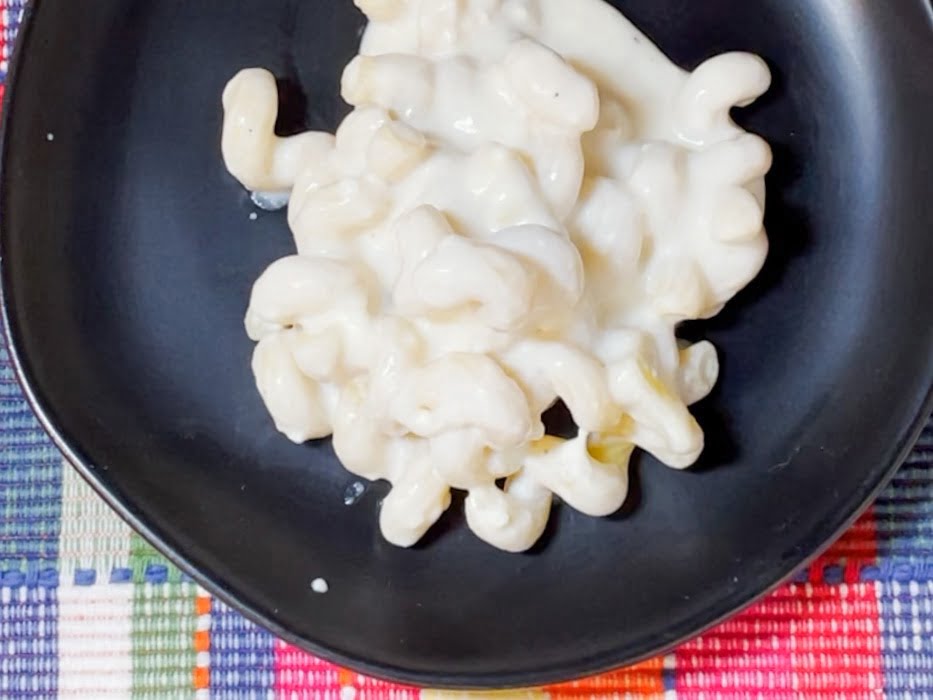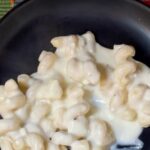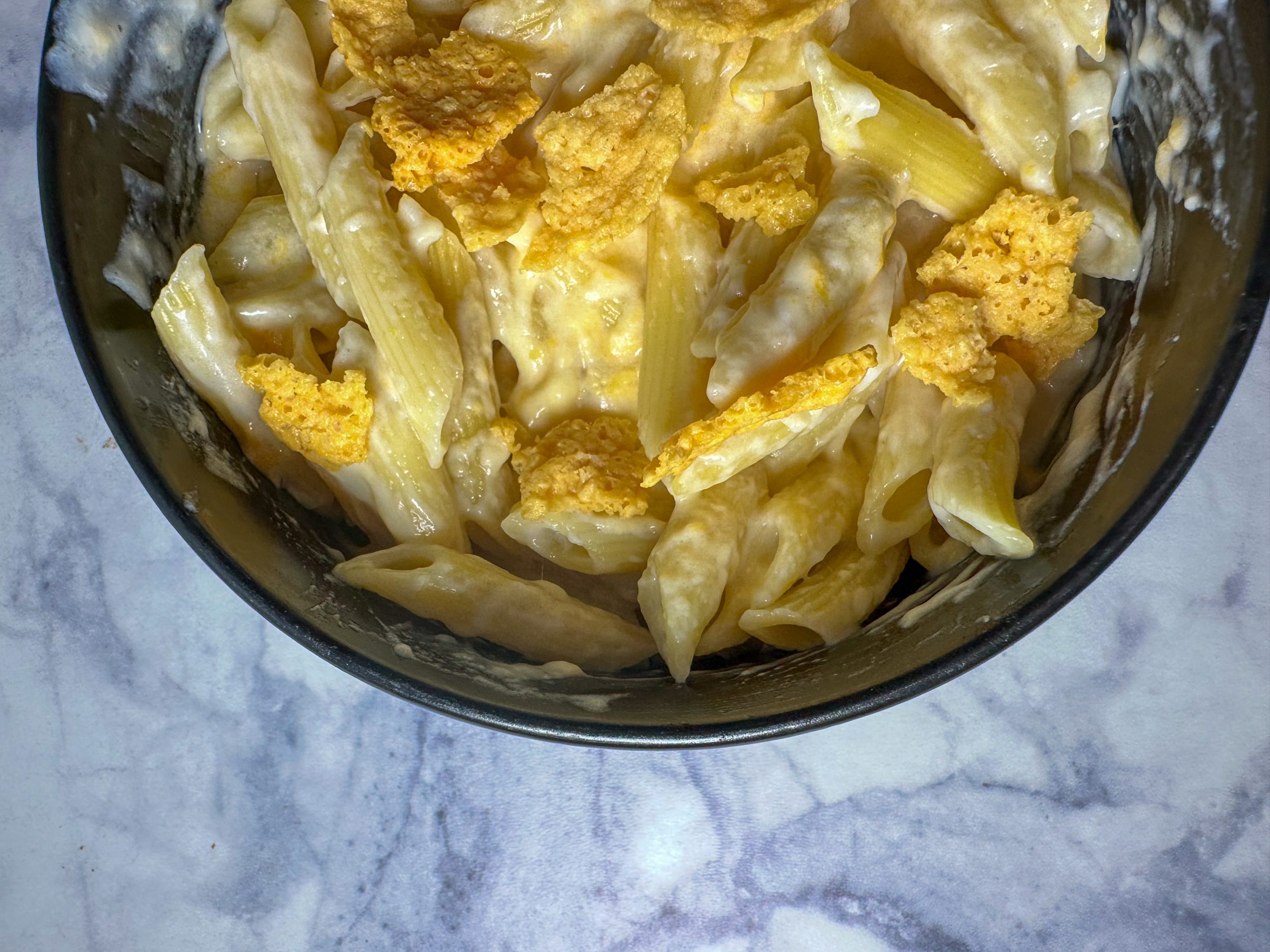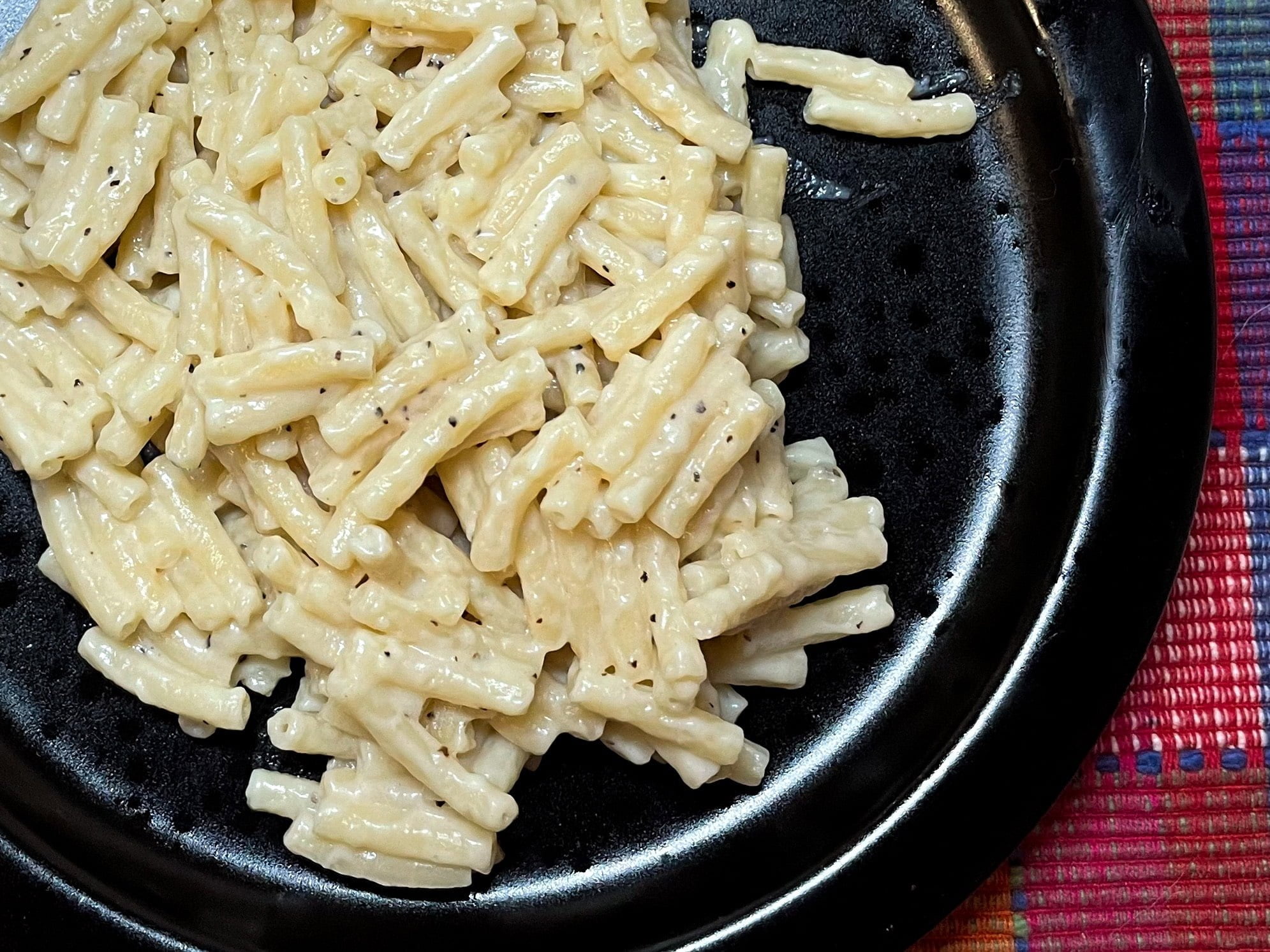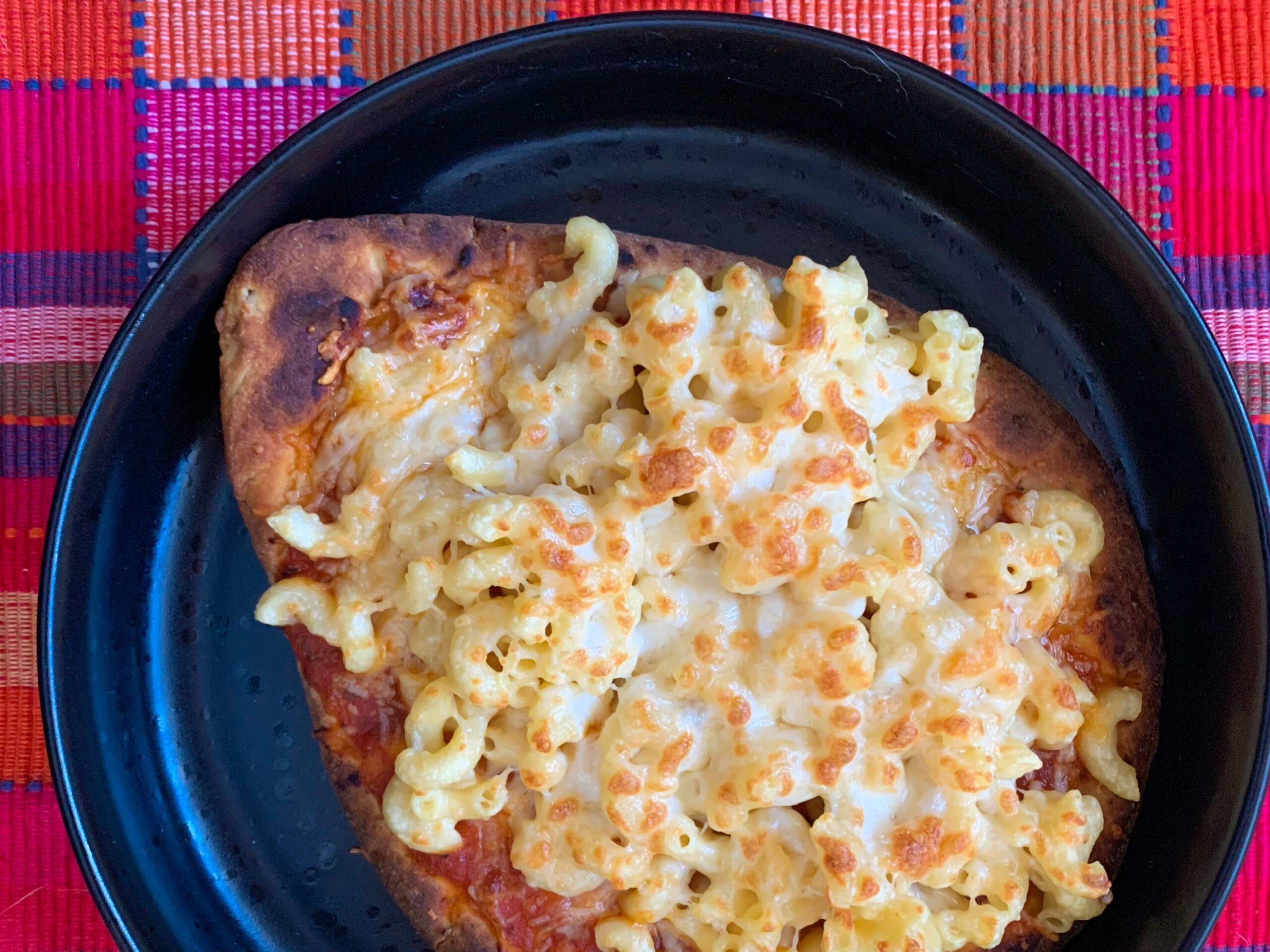It’s day 15 of the Aldi Cheese Advent Calendar and today we have a mustard Gouda and cream mac and cheese recipe. I generally try not to use a single opener cheese with a texture cheese, but as this is a phase of experimentation, I wanted to see how the flavors would come through.
Every year, Aldi releases a cheese Advent calendar. The calendar contains one individually wrapped piece of cheese for each day. There are twelve different cheeses available so we have two opportunities to explore different recipes we can make to feature each cheese. This is one of those recipes. Follow along here.
How to Use Cheese in Mac and Cheese
Different cheeses offer flavor profiles that shine through at different times. Some cheesy flavor comes out immediately as you bite into it. This is what I call “opener” cheeses. They welcome you to a bowl of mac and cheese with immediate flavor. However, a recipe that includes only opener cheese will fade toward the end of the bite. You need other flavors to help carry throughout the palate. That’s where closer cheeses come in. These cheeses take a few seconds for the flavor to develop but it lasts. Recipes that only use closer cheeses will be flat at the beginning of the bite.
Well-rounded mac and cheese recipes make use of both opener and closer flavors.
Mustard Gouda
Gouda is a cheese that walks the line between opener and closer depending on how long it is aged. Aged Gouda tends to be a closer cheese while younger Gouda, like you see in the Aldi advent calendar, is an opener cheese. It’s important to taste goudas before you commit to a recipe so you’re sure the flavors will match your outcome.
Mustard helps bring out the cheesy flavor in dishes. Your mac and cheese will not taste like mustard, but it helps elevate it much like salt helps enhance flavors.
Cream Cheese
Cream cheese does not add much to the flavor of mac and cheese, but it increases richness elevating it from so-so to something special. Generally I would not pair an opener with only a texture cheese, but as this is an experiment, I thought I would play with the ingredients.
Cavatappi Pasta in Mustard Gouda and Cream Mac and Cheese
The pasta you use in your mac and cheese makes a huge impact. If your noodle shape is too large, you run the risk of your dish being cumbersome and difficult to eat. On the other hand, if your pasta is too small you lose valuable texture benefits. New mac and cheese chefs will struggle to use smaller noodles because it will more easily show defects in your sauce.
Cavatappi, like we see in today’s mustard Gouda and cream mac and cheese is the perfect Goldilocks size between too large and too small, making it a great noodle for mac and cheese. Additionally it offers plenty of curves to hold onto the sauce, so every bite is full of cheesy goodness.
Add a Fork to Mustard Gouda and Cream Mac and Cheese
This mustard Gouda and cream mac and cheese is lighter in flavor, but still packs a richness that you wouldn’t expect. It would make a great side for a steak or grilled chicken.

Mustard Gouda and Cream Cheese Mac and Cheese
Ingredients
- 16 oz pasta cooked according to package directions
- 3 tbsp butter
- 3 tbsp flour
- 3 cups whole milk
- 4 oz Mustard Gouda, grated
- 2 oz Cream Cheese
- salt to taste
- pepper to taste
Instructions
- Pre heat your milk in the microwave for 45 seconds – just enough to take the chill out of it.
- Melt butter in a sauce pan over medium heat and let it heat until it becomes foamy.
- Mix in flour. Cook it for a minute while stirring constantly
- Slowly add warmed milk to the butter mixture 1/4 cup at a time. Whisk it continually until combined. Season generously with salt and fresh cracked pepper.
- Once all of the milk is added, cook for a few minutes while whisking it. Do not let it boil. You will feel the sauce start to thicken. It’s ready for cheese when you rub a small amount between your fingers and it feels silky.
- Remove from heat and stir in your cheese until it’s melted and mixed into the sauce.
- Once the cheese is incorporated, use a cooked noodle to taste your sauce. If it doesn’t taste cheesy enough try adding a little more salt to bring out the flavor.
- Combine the pasta and sauce and serve.

